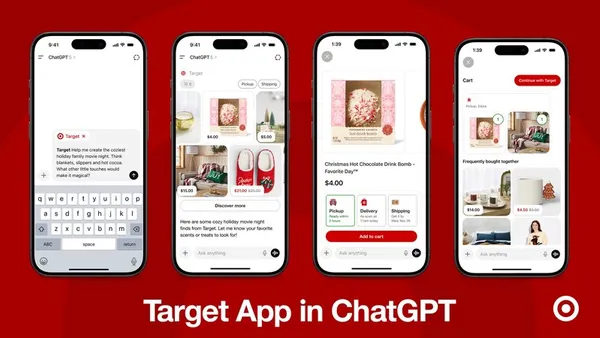Brief:
- Consumers are most receptive to mobile ads when they're at home relaxing, such as while watching TV or getting ready for bed, according to a survey by mobile marketing firm Aki shared with Mobile Marketer. Almost two-thirds (59%) of consumers are receptive to mobile ads while watching TV, ahead of other activities such as lying in bed before sleep (51%), eating a meal (36%) and shopping at a store (25%), the survey found.
- The awareness of mobile ads also varies by generation, with 66% of millennials saying they are receptive to mobile marketing while watching TV, ahead of Gen X (57%), Gen Z (55%) and Baby Boomers (53%). At bedtime, 73% of Gen Z is receptive to ads, compared with 63% of millennials, 51% of Gen X and 40% of Boomers.
- Millennials are the most receptive audience to seeing ads while shopping. About two-fifths (39%) of the group pays attention to ads at stores, compared with 37% for Gen X, 25% for Gen Z and 15% for Boomers, the survey found.
Insight:
The growing clutter of advertising messages bombarding consumers means that brands must be more selective about reaching audiences when they're most receptive to marketing messages. Aki's survey helps to identify key moments when mobile users of different ages are most likely to be aware of ads. Broadly speaking, 74% of consumers are attentive to smartphone content while relaxing, and 26% when getting ready for bed — or “lean back” states of mind. When it comes to "lean forward" activities, 68% of consumers pay attention to smartphone content when looking for something to do and 34% while feeling full of energy.
Mobile users are generally less receptive to ads while on the go, which helps to explain why activities like “running errands” are the worst time for consumers to pay attention to ads. While more than half (54%) of consumers are receptive to an ad from a familiar brand, that share drops to 38% when they’re on the go, Aki's survey suggests. Aki recommends reaching mobile customers with ads that cater to the more distracted mindset, such as simple banners that feature store locators.
Aki released its findings amid a broader trend of consumers increasingly watching TV while using another device that's more likely to hold their attention. These "distracted viewers" make up a significant part of today's TV audience, with 89% of smartphone users saying they watch TV while using a phone, according to a Deloitte survey. A majority (82%) of marketers said TV viewers' second screens and clutter are hampering TV ad campaigns, according to a survey by ad tech company Viant. Viewers are engaging with their devices as much during TV shows and commercials as they are during the 30-minute window before and after, Viant data show. TV viewers might be physically present while commercials air, but not fully mentally present.
Spending on mobile advertising is set to make up 43% of the total U.S. ad market by 2020, exceeding total spending on all traditional media, researcher eMarketer forecast. Spending on mobile ads is forecast to grow 22.6% to $15.93 billion in 2019 from a year earlier, the researcher said.











